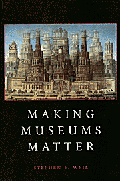CHANGE MANAGEMENT
“The truth is that change is inherently messy. It is always complicated. It invariably involves a massive array of sharply conflicting demands.” – David Nadler, Champions of Change, 1998 Recommended Reading
Leading during change requires courage and compassion: the courage to recognize that change, however painful, is both essential and inevitable; the compassion to recognize that the pain must be acknowledged and minimized to the extent possible.
Far too often, management announces a significant change in purpose, policy, or procedure and expects every employee to embrace the change from day one. Managers fail to recognize that they and the employees will go through a grieving process which generally impedes and can often derail successful change. For positive institutional change to be created, you must understand that each manager and employee experiences a transition from what has been to what will be. In Managing Transitions: Making the Most of Change, William Bridges defines the stages of transitions:
- an ending, followed by
- a period of confusion and distress, leading to
- a new beginning.
In challenging economic times, every organization has a small group of people who are critical to its success — current and future. This is a time for shared goals and creative solutions, not individual priorities and business as usual. The preference for the comfort zone of the “silo” versus across-institution initiatives will decrease nimbleness, commitment to working through and accepting change, and positioning your organization to survive the current economy and thrive in the future.
“Wendy Luke stands out in her field as a smart, thoughtful, and compassionate facilitator. Having worked with her on two retreats designed to help those in the art field adjust to radical changes in the working environment, I observed Luke’s talent for quickly focusing on core issues and figuring out the best processes for addressing difficult challenges that upset the work/life balance. Her relaxed demeanor encourages a comfortable and safe environment for open discussion. A goal-oriented leader, Luke possesses organizational abilities and a keen eye for detail that ensure tangible results.”
 Dr. Jordana Pomeroy
Dr. Jordana Pomeroy
Chief Curator
National Museum of Women in the Arts
Washington, DC
Change in Purpose
Sometimes a museum needs a total redo. In 2001 the local Capital Children’s Museum chose to become the National Children’s Museum, with new space, interactive exhibits, and appeal to children of all ages. Transitions can be painful. To insure that this was carried out with dignity and respect, I served as the adviser to the president and her senior management team as the first facility closed in 2004. In as neutral a way as possible, we identified the jobs that were needed going forward and matched employee knowledge and skills to those jobs. To assist the employees whose positions were to be eliminated and encourage them to continue to do their best for the museum and its visitors, they received help in developing their job search and interview skills, finding resources, and meeting potential employers. Over the final four months before closing, the museum celebrated both the history of the museum and the many contributions its employees had made. Now, as the next facility is coming together – a 150,000-square-foot, state-of-the-art children’s museum – I am helping with staffing, policy, and culture creation.
“Wendy helped us avoid missteps. It was great to have someone along who had done this before.”
 Kathy Dwyer Southern
Kathy Dwyer Southern
President and CEO
National Children’s Museum
Washington, DC
Change in Uncertain Times
Change management today, unfortunately, most often means reducing staff size to deal with reduced endowments, contributions, and income streams. Having lived through these cycles for four decades, in both the for-profit and non-profit worlds, I bring many lessons-learned about what to do, what not to do, when to do it, and, very importantly, how to do it. Please contact me for more information.

